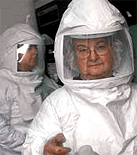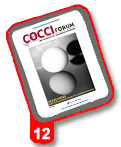Technically speaking: essential elements
Dr. David Chapman presents new guidelines for coccidiosis vaccines.
 By H.D. Chapman, Ph.D.
Department of Poultry Science,
University of Arkansas, USA |
Guidelines have long been available to help researchers satisfy standards for drugs and many viral and bacterial vaccines "but none have been produced for vaccines against coccidiosis. Consequently, the author recently assembled a group of experts to participate in a joint project aimed at finding a remedy to this deficiency. The team included myself and the following esteemed experts:
- Professor Martin Shirley, deputy
director of the Institute for Animal
Health, United Kingdom, lead the
research team in the 1980s that developed
the world's first attenuated coccidiosis
vaccine. More recently, he was
instrumental in organizing a successful
project to sequence the entire genome
of E. tenella, the most widespread,
pathogenic species of Eimeria that
infects the chicken.
- Dr. Ray Williams, of the UK, is one
of the world's leading coccidiosis
researchers with vast experience in the
poultry industry. Dr. Williams has published
numerous papers about avian
coccidiosis and vaccination.
- Dr. Brian Roberts, also of the UK, is
an international authority with detailed
knowledge of the registration requirements
necessary for obtaining marketing
authorization for poultry vaccines.
The team received advice from veterinarians, researchers and those with practical knowledge of poultry production. Scientists working in government, academia and industry around the world were consulted, but the sometimes controversial opinions expressed in the guidelines are the group's own. A leading poultry veterinary journal, Avian Pathology, published the guidelines1, which are shown below.
Procedures
Birds in vaccine development studies should be vaccinated under conditions that duplicate as closely as possible the manner in which vaccination will be carried out in the field. Subsequently, birds should be intentionally challenged with the parasite to see whether they have acquired protective immunity.An important aspect of experimental design is that vaccinated birds must be reared in floor-pens to allow adequate exposure to infection following vaccination; the challenge phase of experiments can be carried out in wirefloored cages or pens. The guidelines as published in Avian Pathology provide detailed information about conducting these studies.
Once satisfactory results have been obtained from experimental studies, large-scale field tests can then be carried out; this is important to establish that a vaccine is safe for use in the field. Preferably, such trials should be carried out in all geographical regions where a vaccine is intended for use.
Criteria for efficacy
Guidelines for coccidiosis vaccines
|
In some countries, guidelines for avian vaccines have been produced by registration authorities, but specific standards for anticoccidial vaccines in poultry apparently have not been published so far. Detailed knowledge of any local requirements is essential to obtain product approval.
The guidelines drafted by the project group provide information on the general requirements of regulatory authorities based on regulations currently applicable in the EU and the US. Topics covered in the guidelines include efficacy requirements, safety and environmental considerations, quality control in terms of purity, pharmacopoeial sterility, potency, quantification and stability etc., manufacturing practice and, last but not least, necessary documentation.
Purpose
In the foreseeable future, new vaccines are likely to be introduced for protecting poultry against coccidiosis. Some of these vaccines will be produced by companies with an established track record in providing high quality vaccines to the poultry industry but, as pointed out at the 2005 International Coccidiosis Conference held in Brazil, many smaller companies lacking such experience are also likely to be involved. It is important that all commercial vaccines, whatever their source, be produced to the same high standards. For example, in the US, source flocks used to produce poultry vaccines must be serologically tested to ensure freedom from at least 11 kinds of virus, not to mention Mycoplasma and Salmonella species.To reiterate, the purpose of the project group's guidelines is to facilitate the worldwide adoption of consistent, standard procedures for evaluating the efficacy, safety, manufacture and quality control of coccidiosis vaccines for poultry. The poultry industry deserves no less.
Reference
1 Chapman, HD, Shirley, MW, Williams, RB. Guidelines for evaluating the efficacy and safety of live anticoccidial vaccines, and obtaining approval for their use in chickens and turkeys. Avian Pathology 2005;34: 279-290.Source: CocciForum Issue No.12, Schering-Plough Animal Health.








